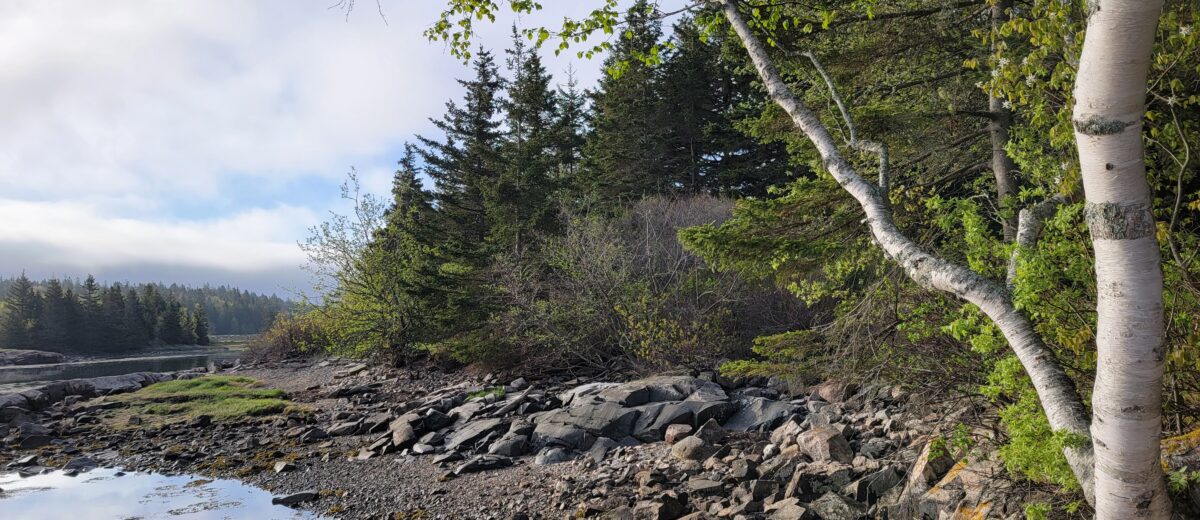Acadia National Park’s forests, lakes, and coasts are changing. They are already measurably different than they were when the park was created in 1916. Plant and animal species have been lost and others have arrived. And the pace of change is speeding up.
On Friday and Saturday, June 11 and 12, Schoodic Institute hosts a pair of events for the public to learn about—and help scientists document—Acadia’s diversity of animals, plants, mosses, lichen, and fungi.
In a virtual talk on Friday, June 11, Dr. Abe Miller-Rushing will present the latest science on Acadia’s changing biodiversity, and what park managers are doing to protect habitat and wildlife.
Miller-Rushing is the Science Coordinator at Acadia National Park. In that role, he oversees science strategy and research taking place in the park. His own research focuses on citizen science, the impacts of climate change on forests, and climate-smart approaches to conservation.
On Saturday, June 12, everyone is invited to help survey biodiversity during the family-friendly Birds, Bugs, Birches, & Barnacles bioblitz and picnic. Schoodic Institute scientists will lead short nature scavenger hunts to safely document as many birds, bugs, trees, lichens, and barnacles that can be found on the Schoodic Institute campus, trails, and shoreline.
After the morning’s field effort all registered participants are invited to a free celebratory picnic on campus. The event is free but registration is required.
These events are part of the Landscape of Change project, which seeks to revisit historic data on birds and bugs from Mount Desert Island. Also documenting birds and bugs on the mainland portion of Acadia and surrounding region helps biologists with the National Park Service put Mount Desert Island data in context, revealing more information about abundance and distribution of Acadia’s biodiversity.
